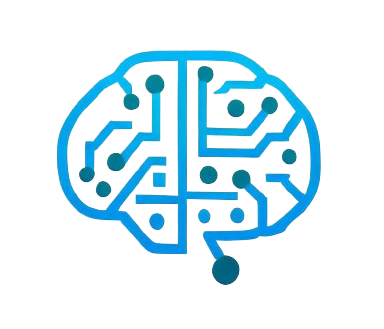The integration of data into sports has fundamentally changed the way teams approach training and competition. Historically, decisions in sports have been largely based on subjective observations and traditional statistics such as scores and averages. However, the past decade has seen a dramatic increase in the types and amounts of data that can be collected, thanks to advances in technology. Wearable devices such as GPS trackers and heart rate monitors now collect detailed biometric data from athletes during training and competition. These devices provide accurate measurements of such indicators as speed, heart rate, distance traveled, and acceleration.
Video analysis has also become a cornerstone of modern sports analytics. High-definition cameras capture every game from different angles, creating vast amounts of data that can be analyzed to assess player movements, team formations, and tactical execution. Advanced software can break down this footage and analyze it frame-by-frame to gain detailed information about player positioning and decision-making processes.
In addition to on-field data, sports teams also collect physiological and psychological data on their athletes. Methods such as heart rate variability sensors, sleep trackers, and even mood assessments provide a holistic picture of an athlete’s condition. This type of data is critical to understanding players’ fitness and fatigue levels, allowing teams to adapt training loads and recovery processes.
 The convergence of these data sources has enabled the development of comprehensive databases that track athlete performance over time, offering a complete picture of both individual and team dynamics. Machine learning algorithms are then applied to these data sets to identify trends, predict outcomes, and derive actionable insights. This information helps coaches design practice schedules, build game strategies, and make informed decisions about player health and performance.
The convergence of these data sources has enabled the development of comprehensive databases that track athlete performance over time, offering a complete picture of both individual and team dynamics. Machine learning algorithms are then applied to these data sets to identify trends, predict outcomes, and derive actionable insights. This information helps coaches design practice schedules, build game strategies, and make informed decisions about player health and performance.
Machine Learning And Player Performance
Machine learning has made a significant impact on the performance of sports players by providing detailed analytics derived from large data sets. One of the main areas of application is the wearing of technologies that athletes use during training and competition. These devices record a variety of data, including heart rate, movement patterns, acceleration, speed, and direction changes. By analyzing this data, machine learning algorithms can identify patterns that correlate with both optimal performance and potential injury risk.
In practice, this means that coaches and trainers can use machine learning models to monitor athletes and predict when they may be at risk of injury. For example, if an athlete’s movement patterns indicate abnormal stress on the knee joint, the system can signal the need for intervention, perhaps by changing the training regimen to reduce the risk of injury. Additionally, by analyzing indicators of fatigue such as heart rate variability and muscle strain, algorithms can help dictate more effective rest and recovery strategies, ensuring athletes perform at peak performance when needed.
Historical performance data is another key aspect of how machine learning contributes to player performance. Algorithms can process and analyze data from past games and practices to determine what conditions and strategies led to an athlete’s best results. For example, they may find that an athlete tends to perform better in the second half of a game when he consumes a certain amount of carbohydrates before a match or when his training focuses more on sprinting exercises rather than weights in the days leading up to competition. This information allows for personalized training schedules and nutrition plans to improve the athlete’s readiness and performance during competition.
In team sports, machine learning is used to evaluate the performance of players about other players. This involves analyzing data about how individual players interact and work together in different configurations. By processing this data, machine learning can help determine which players work best together based on successful past results, thus informing decisions about formations and tactical formations. Teams use these analyses to deploy players in roles that maximize their strengths and strategic contributions, improving overall team performance.
Improving Team Strategy With Analytics
Machine learning has become a vital tool for improving team strategy by providing detailed analysis of game data and identifying patterns that inform decision-making. Teams use machine learning algorithms to process large amounts of data from game footage, capturing metrics such as player movements, passing accuracy, ball possession, and shot selection. This data helps teams develop strategies tailored to specific opponents.
For example, by analyzing an opponent’s previous games, a machine learning model can identify trends, such as defensive weaknesses that can be exploited or attacking plays that often lead to goals. Armed with this information, coaches can develop game plans that maximize this knowledge, such as targeting an opponent’s weaker defensive zone or adjusting their strategy to neutralize a star player.
In addition to understanding opponents, machine learning helps optimize in-game decisions. Real-time data analysis allows coaches to make precise substitutions and tactical adjustments based on current conditions. For example, if analytics show that a certain player is underperforming or fatigue data suggests he is slowing down, coaches can strategically substitute players to keep the team at peak performance. In addition, predictive models can simulate different game scenarios, helping teams prepare for different outcomes and develop contingency plans.
When it comes to recruiting and player development, machine learning algorithms evaluate player performance across leagues and competitions, identifying talent that fits a team’s style and needs. This analysis can highlight undervalued players who statistically fit the team’s strategic needs, leading to more informed draft decisions and trades.
Machine learning also helps improve team learning by evaluating team performance. Analytics tools track team cohesion and effectiveness, showing how well players execute game plans and collaborate on the field. Using this data, coaches can design training sessions that focus on improving specific aspects of teamwork, such as communication, positioning, and execution of coordinated plays.
